The BEST episodes of Bill Nye: The Science Guy
Every episode of Bill Nye: The Science Guy ever, ranked from best to worst by thousands of votes from fans of the show. The best episodes of Bill Nye: The Science Guy!
Comedian/scientist Bill Nye stars as the host of this show designed to get kids interested in the science of everyday, and some not-so-everyday, things. On a full range of subjects, including ecology, biology, chemistry and physics, Nye gives an easy-to-understand, yet informative lesson that both kids and their parents can enjoy.
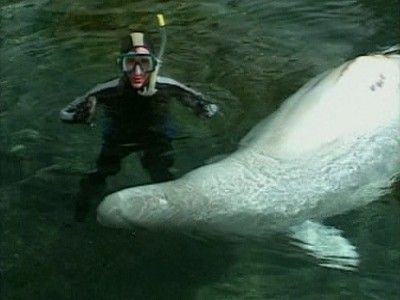
#1 - Marine Mammals
Season 4 - Episode 3 - Aired 11/17/1995
Whales, dolphins, otters, walruses, and orcas are just like us, they’re mammals. Well, they’re not just like us. They live in the ocean. They breathe air, have hair, nurse their babies, and they are warm-blooded. They keep the same body temperature all day. To do that in the ocean isn’t easy. Water soaks up heat, so the ocean is really pretty cold. Marine mammals have all sorts of ways to keep warm. Whales, dolphins, and walruses have thick layers of fat called “blubber.” It’s great insulation. It holds their body heat keeping them warm in the cold ocean. Sea otters have thick layers of fur that cover their whole bodies. Otters fluff their fur to trap air between the hairs. It helps them float, it the air keeps them warm even when they dive deep hunting for food. These adaptations make it possible for marine mammals to live all over the world’s oceans.
Watch Now:Amazon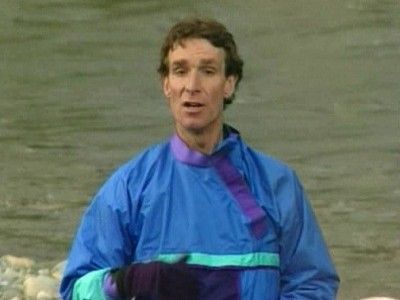
#2 - Rivers & Streams
Season 4 - Episode 1 - Aired 11/3/1995
Water is massive; rivers are powerful. As rivers flow downhill, they wear away rock and soil to form canyons or winding curves in the land, called meanders. Sometimes rivers fill and overflow their banks. Rivers with too much water create floods that can carry away plants, trees, buildings and boulders. Rivers and streams support most of the ecosystems on land.
Watch Now:Amazon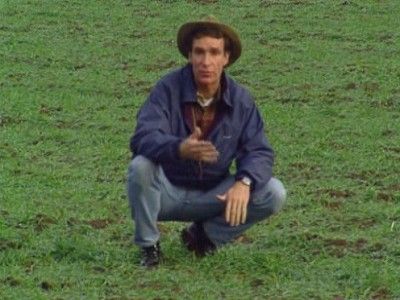
#3 - Farming
Season 5 - Episode 5 - Aired 10/31/1997
Before food gets into your kitchen, before it even gets to the store, it’s on a farm. Almost everything we eat is grown on a farm, an area of land used to raise animals and plants. Farming nowadays can get pretty complicated. Farmers are scientists – agricultural scientists. Farmers work hard to keep their farms healthy. Soil is stirred up to get oxygen to the microorganisms that live in between the grains and to plant roots – that’s called tilling the soil to aerate it. Plants need to be protected from pests with either chemical pesticides or biological pesticides. Animals like bats and friendly insects eat other pest insects (chomp,chomp). Animals are milked, corralled, fed, sheared, slaughtered or cleaned-up after.
Watch Now:Amazon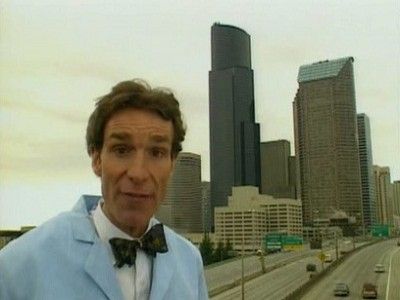
#4 - Architecture
Season 5 - Episode 4 - Aired 10/24/1997
Towers, teepees, castles, and condominiums – some kind of planning goes into all buildings, no matter how big or small. Architects are people who design buildings, and the areas around buildings. Usually architects draw on a computer or a big desk (a drawing board). The plans show the dimensions of all parts of a building. Architects try to design with the purpose of the building in mind, but even buildings used for the same thing can look very different.
Watch Now:Amazon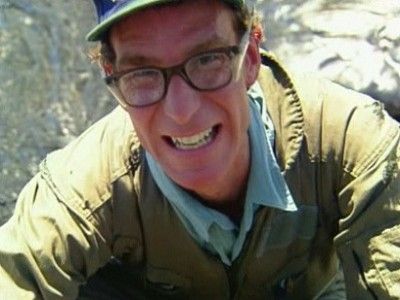
#5 - Volcanoes
Season 4 - Episode 14 - Aired 1/31/1996
Volcanoes are mountains made from molten rock. The Earth’s crust is divided into big slabs, called plates, which are slowly moving all the time. The plates are floating on the Earth’s mantle, a layer of gooey hot rock that flows like maple syrup. Some places in the mantle, the rock gets very hot and nearly liquid. It’s called magma. Sometimes the magma reaches the Earth’s surface and forms a volcano.
Watch Now:Amazon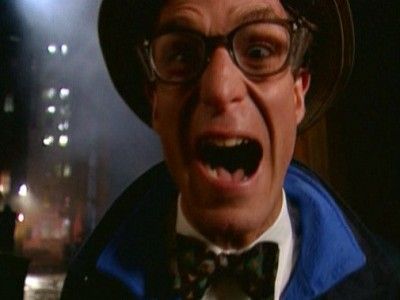
#6 - Invertebrates
Season 4 - Episode 15 - Aired 2/7/1996
Worms, squid, clams, and flies are spineless creatures. They’re not afraid, they’re invertebrates – animals that don’t have backbones. Invertebrates are everywhere. You can find invertebrates in the sea, in freshwater, and on land. There are about 30 times more invertebrates than vertebrates on Earth.
Watch Now:Amazon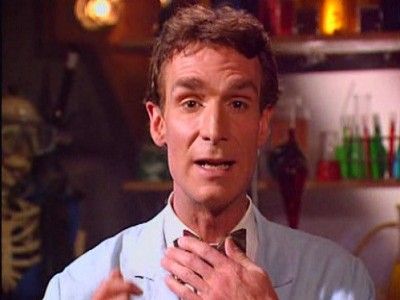
#7 - Amphibians
Season 4 - Episode 13 - Aired 1/30/1996
Frogs, toads, salamanders, newts, and caecilians (worm-like animals that have backbones) are all amphibians, animals that spend part of their lives in water and part on land. Amphibians are slimy. Amphibians are cold-blooded that means their body temperature changes with the temperature outside. And as amphibians grow up, they go through metamorphosis.
Watch Now:Amazon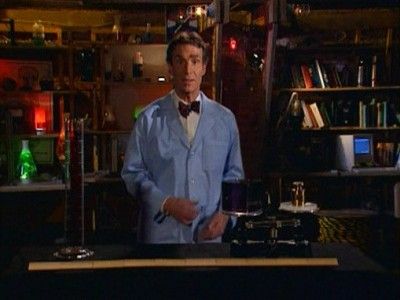
#8 - Measurement
Season 5 - Episode 17 - Aired 5/30/1998
Did you know that the Concorde moves 300,000 times faster than a land snail? Or that a giant redwood can be as tall as a 35-story apartment building? The only reason we can make these comparisons is because people have measured these things. We don’t compare jets and snails every day, but we do rely on measurement constantly. When you take your temperature, you find out how it compares to the temperature of someone who is healthy. When you bake brownies, you’ll need to measure the ingredients first to make sure they turn out tasty. Using measurement, we can make useful comparisons of distance, time, mass, and temperature.
Watch Now:Amazon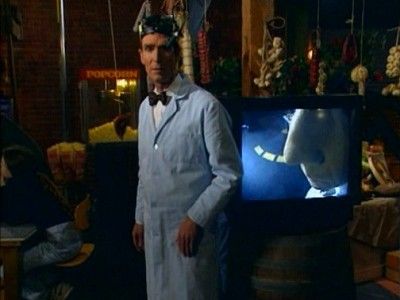
#9 - Smell
Season 5 - Episode 11 - Aired 2/28/1998
How do noses work? Objects give off tiny amounts of tiny molecules into the air. When just a few of these molecules get up your nose, they dissolve in the mucus up there. Some molecules come into contact with special receptors on what’s called your “olfactory membranes.” Each nostril has a membrane, and each membrane is only about the size of a postage stamp. The membranes hold millions of receptor cells, each of which are ready to send messages to the brain about the molecules that go up your nose.
Watch Now:Amazon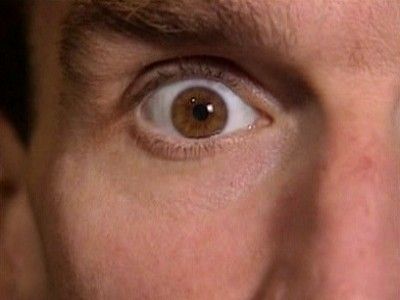
#10 - Eyeball
Season 1 - Episode 20 - Aired 2/11/1994
Look no further ... Bill Nye is on the ball - the eyeball. For their small size, your eyes do an important job. By working with your brain, your eyes can tell the difference between thousands of different colors. They can follow a fast-moving hockey puck across the ice. They are even sending messages to your brain about what you're reading right now. Eyes work a lot like a camera. They take in light, focus light, and make images. With help from the brain, your eyes help understand the world around you. Light bouncing into your eye passes through an opening called the pupil. If you look in the mirror, your pupil is the black area in the middle of your eye. The pupil can open or close, depending on the brightness of the light. After passing the pupil, the light is focused onto the back of your eye by the lens, a thin layer of cells. On the back of your eye are special cells called rods and cones that are sensitive to light. These cells send electrical messages to your
Watch Now:Amazon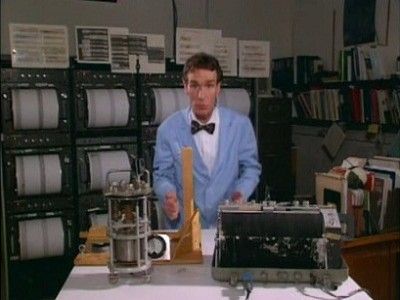
#11 - Earthquakes
Season 4 - Episode 4 - Aired 11/24/1995
Earthquakes happen when pieces of land in the Earth’s crust scrape together. The crust of the Earth is made of big slabs of land called plates that are constantly moving just a little bit. The plates scrape by one another, and sometimes they don’t move smoothly. An earthquake happens when the plates get unstuck suddenly and jerkily slip past each other. The majority of earthquakes occur along plate boundaries such as the boundary between the Pacific Plate and the North American plate. One of the most active plate boundaries for earthquakes is the massive Pacific Plate commonly referred to as the Pacific Ring of Fire. The fire comes from the volcanoes that form near the edge of the plates.
Watch Now:Amazon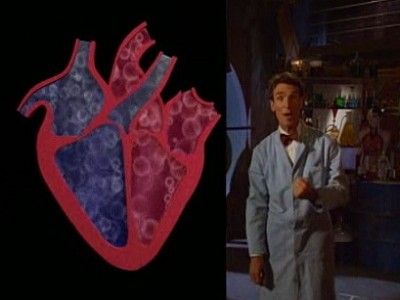
#12 - Heart
Season 4 - Episode 16 - Aired 2/14/1996
Your heart pumps your blood around your body, all hours, every day of the week, to keep you alive. Your heart is about the size of your fist, and it’s made of special muscle called “cardiac” (KAR-dee-ak) muscle. Cardiac muscle lets your heart keep the beat, it can also speed up or slow down, depending on what your body needs. Your heart works like an automatic pump – it squeezes, or contracts, and un-squeezes, or relaxes, to push blood through the four different sections of your heart. Valves, special one-way openings, are like little doors between the sections – making sure your blood moves in only one direction through your heart, to your lungs, back to your heart, and then around your body again.
Watch Now:Amazon
#13 - Erosion
Season 5 - Episode 14 - Aired 5/9/1998
Dirt, sand, and rock from the Earth’s surface gets blown, sliced, torn, swallowed and distributed all over the world. What was yesterday’s hill is tomorrow’s flat plain. The planet looks a lot different than it did when it formed four and a half billion years ago. The force of erosion, the slow wearing away of the land, has never ceased.
Watch Now:Amazon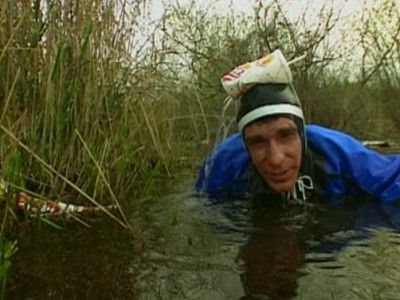
#14 - Pollution Solutions
Season 4 - Episode 7 - Aired 1/12/1996
Dirty water, land, and air are a result of pollution. People are the only animals on Earth that make pollution. Garbage, burning fuel, chemicals, sewage, oil, and pesticides are all human-made things that make the Earth’s atmosphere, water, and soil unclean. Humans are even leaving trash in space, such as broken satellites, pieces of metal, paint from rocket skin, and even cameras and toothbrushes. Much of the junk people make and leave behind hurts plants, animals, you and me.
Watch Now:Amazon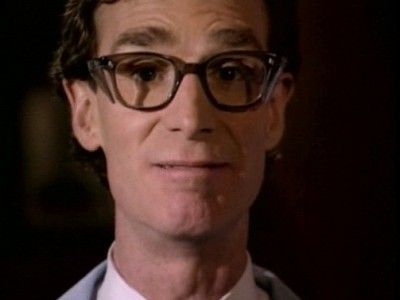
#15 - Chemical Reactions
Season 2 - Episode 4 - Aired 3/11/1994
Bill is practically exploding with excitement about the "Chemical Reactions" show. Every single thing around you is made of chemicals. Plants, rocks, computers, food, and you are bunches of chemicals. All chemicals are built with elements, the 109 different symbols on the Periodic Table. Different combinations of elements make different chemicals. Lots of times, chemicals just sit around, but sometimes, when certain chemicals get together, they react. Chemical reactions take the starting chemicals and end up with new chemicals. Sometimes chemical reactions are hard to miss. Explosions, burning, color changes, and gas are all good signs that a reaction is going on. Some chemical reactions are less obvious - changes in temperature, a different smell, or differences in taste are clues that a chemical reaction is happening. The key is to figure out if you could get back the same chemicals you put in. If the answer is no, you've got a chemical reaction on your hands. Jus
Watch Now:Amazon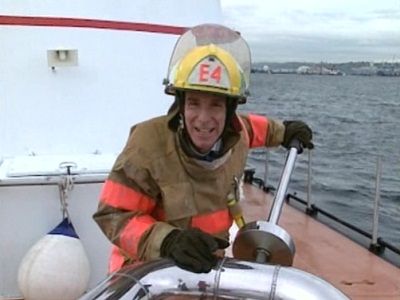
#16 - Pressure
Season 3 - Episode 2 - Aired 1/21/1995
When you push something, you’re using pressure. Pressure depends on two things – the power of the push and the area that’s being pushed on. A push on a small area makes more pressure than the same size push on a big area. Pushing hard on something creates more pressure than a little nudge, naturally.
Watch Now:Amazon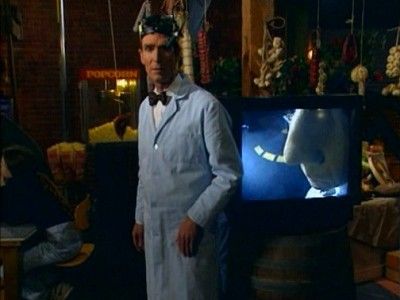
#17 - Caves
Season 5 - Episode 12 - Aired 4/25/1998
Caves come in all different shapes and sizes depending on how they were formed. Spelunkers (people who explore caves) have plenty of descriptive names for caves and the natural rocky features that form within them – soda straws, fried eggs, popcorn and draperies are just a few. Caves can be as simple as one straight passage with a few stalactites overhead, or as complex as a labyrinth, with many stalagmite-carpeted rooms.
Watch Now:Amazon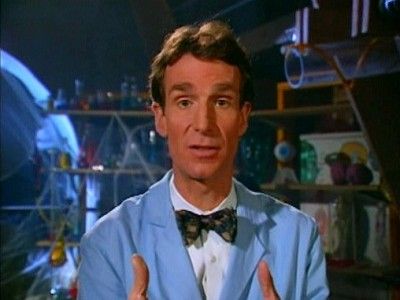
#18 - Spiders
Season 4 - Episode 6 - Aired 1/5/1996
Be sure to get this straight: spiders are not insects, they’re arachnids. Spiders have eight legs, and insects have only six. Spiders have two body parts, a head and an abdomen, while insects have three body parts, a head, a thorax, and an abdomen. Insects have antennae, and spiders do not. Some insects sting. All spiders have fangs and venom. There are almost certainly a few spiders in the room with you right now.
Watch Now:Amazon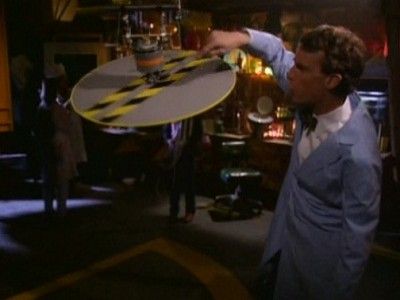
#19 - Spinning Things
Season 3 - Episode 14 - Aired 9/15/1995
A lot of things spin – bike wheels, footballs, hard disks in your computer, and even the Earth – they’re all twirling around. Spinning things have inertia, which means they keep spinning unless something slows them down. Bike tires keep spinning until you put on the brakes. A football spirals through the air until you catch it. The Earth keeps on spinning 24 hours a day, seven days a week. It’s been spinning for over four billion years.
Watch Now:Amazon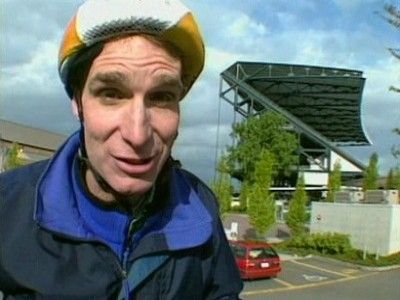
#20 - Balance
Season 2 - Episode 12 - Aired 10/15/1994
Bill Nye's going to use the force to pull you into the world of balance. A force is a push or a pull. You can feel a force when someone pushes you. You can use a force to pull a door shut. Anyone can make forces by pushing and pulling, and you don't need to be Luke Skywalker to use a force. In a game of tug-of-war, if the pull of your team is the same as the pull of the other team, the forces are equal. The two teams are in balance, and the rope doesn't budge. Things are in balance when forces that are pushing or pulling them are equal. If your tug-of-war team pulls harder than the other team, the forces are not equal. The other team falls all over the place. Unequal forces make things move and twist. A lot of things are designed to take advantage of unequal forces. Wrenches, screwdrivers, door handles, and water faucets use forces made by you to do work. A well-balanced science diet starts with Bill Nye.
Watch Now:Amazon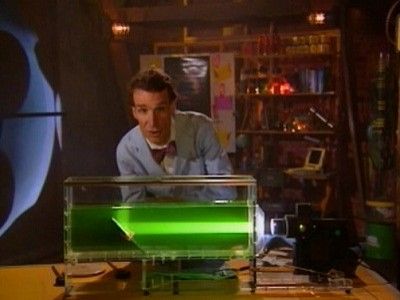
#21 - Light Optics
Season 2 - Episode 7 - Aired 9/10/1994
Don't stay in the dark - Bill Nye will help you absorb the science of light optics. Light is energy that normally moves in a straight line, but often something gets in the way. When light runs into something, three things can happen - the light can bounce off, it can go through, or it can be absorbed. Often all three things happen at the same time. Light bounces off mirrors. You see yourself in a mirror when light bounces off your face, into the mirror, and then into your eyes. Light goes through glass. If the glass is bent or curved, the light gets bent on its way out of the glass. The glass in a magnifying glass or a pair of eyeglasses is curved so that it bends light, making things look bigger. More light is absorbed by dark-colored things than by light-colored things. Colors are made when some light is absorbed while other light is bounced back. Black things look black because when light hits them, they absorb almost all of the light. In outer space, there are obj
Watch Now:Amazon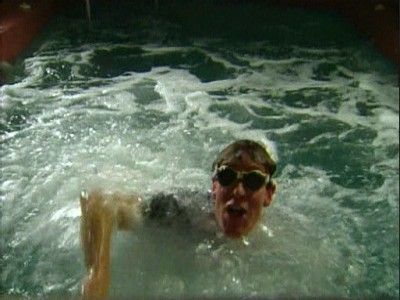
#22 - Fluids
Season 5 - Episode 13 - Aired 5/2/1998
Fluids are cool; they ooze and swoosh. Whatever container you put a fluid in, that fluid will take the same shape. Milk poured into a pitcher forms to the shape of the pitcher. If you pour it into a glass, it takes the shape of the glass. You just can’t do that with a boulder. But with the right container, you could pour liquid rock from below the Earth’s crust. Fluids still act like fluids, even halfway to the center of the Earth.
Watch Now:Amazon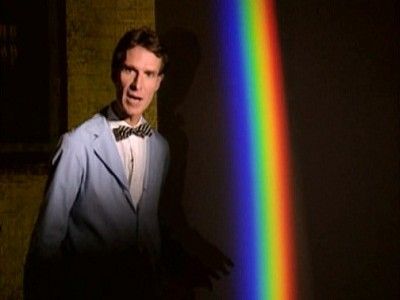
#23 - Light & Color
Season 1 - Episode 16 - Aired 12/24/1993
Lighten up. It's the "Light and Color" episode. Without light, we wouldn't be able to see. It would be like living in a room with no windows, doors, or lamps. There's an old saying, "We don't see things; we see light bouncing off of things." We see things, and colors, when light bounces off things and into our eyes. White light, like the light from the Sun, is made up of all the different colors of light blended together. When white light hits something white, almost all of the light bounces into our eyes, and we see the color white. Things are different colors because some light bounces off and other light gets absorbed. An orange is orange because it absorbs all different colors of light except orange light. Grass is green because it absorbs all different colors of light except green light. Bill Nye's lab coat is blue because it absorbs all different colors of light except blue light. All colors, including black, are made in the same way. It's just a matter of ref
Watch Now:Amazon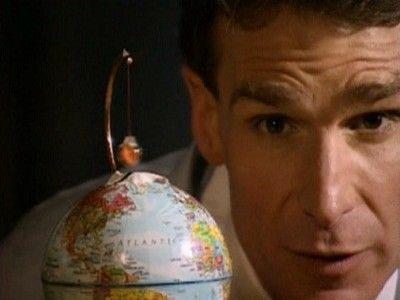
#24 - Earth's Seasons
Season 1 - Episode 15 - Aired 12/17/1993
It doesn't matter if it's spring, summer, winter, or fall - Bill Nye is always in season. Every year, we experience the seasons. Some months have snow and rain, while other months have warmth and sunshine. Temperatures go from cold, to woarm, to cold again – winter, spring, summer, and fall. The cycle of the seasons takes one year, and the Earth takes one year to go around the sun. Coincidence? No way. The Earth's orbit around the Sun is flat, as though our planet were spinning over a tabletop. Compared with flat plane of its orbit, the Earth is tilted. Its axis, the imaginary line between the North and South Poles, is tipped over a bit. In June, the north half of the Earth (the Northern Hemisphere) is tilted toward the Sun, and it's summertime in places like Nye Labs in the United States. Meanwhile, the south half (the Southern Hemisphere) is tilted away from the Sun, and it's winter there, in places like Australia and South Africa. The Earth's orbit isn't quite
Watch Now:Amazon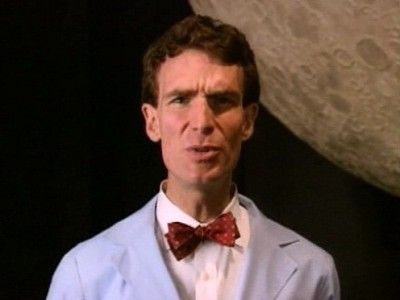
#25 - The Moon
Season 1 - Episode 11 - Aired 11/19/1993
Let the moon master Bill Nye teach you the ancient and not-so-ancient secrets of the Moon. Wax on, wax off. The Moon grows bigger (waxes) and smaller (wanes) every 30 days or so. The word "month" comes from the word "moon". The Moon is the closest thing in space to Earth, and it's one of the most well-studied orbs in our solar system. We know that Moon rocks are rich in calcium and aluminum, that the Moon has no atmosphere, and that there are over a million craters on the Moon's surface. The Moon doesn't glow on its own, it reflects sunlight. Watch the Moon every night for a month as it grows, shrinks, and at one point disappears. The Moon doesn't actually change it's shape. It's the way the sun shines on the part of the Moon we see that makes the phases change. The Earth moves around the Sun, the Moon moves around the Earth. As the Moon moves through its orbit, the Sun shines on bigger or smaller portions of it. If you were looking at the Moon from the Sun, it woul
Watch Now:Amazon